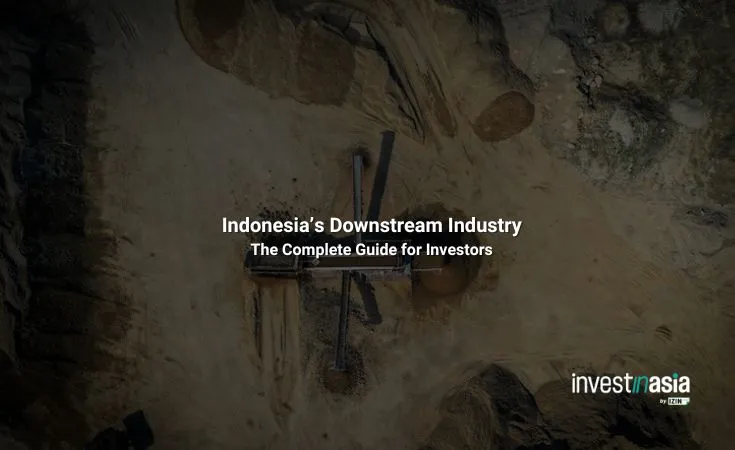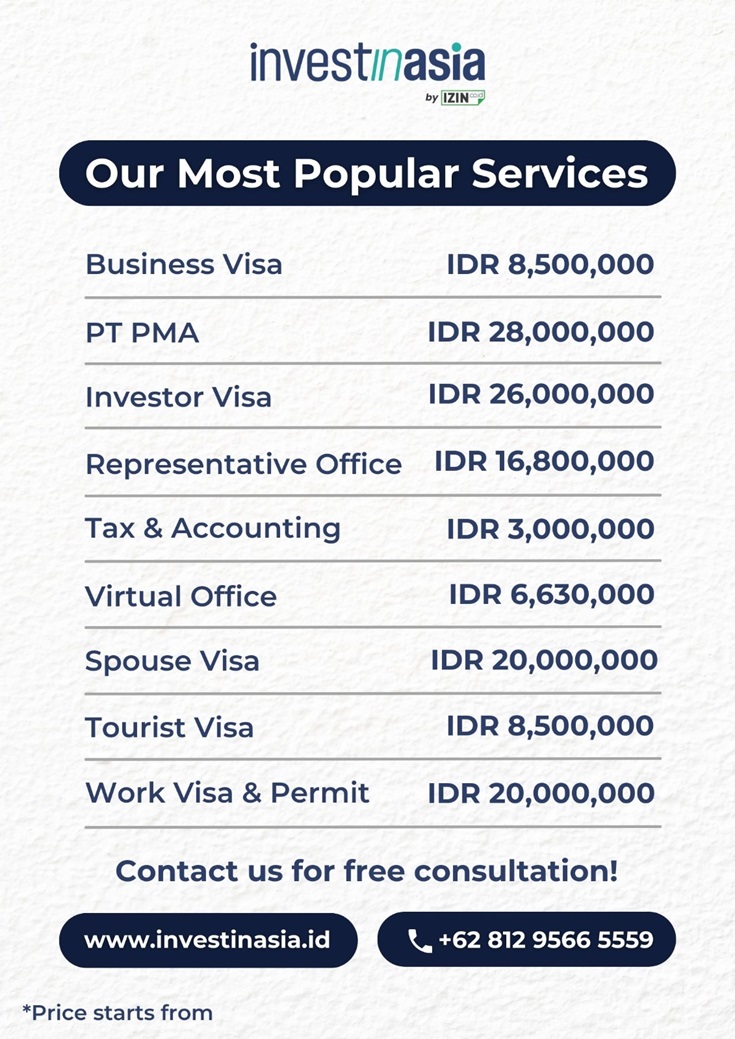Indonesia’s downstream industry marks a historic shift from exporting raw materials to processing them domestically. Since 2020, this initiative has drawn over USD 79 billion in investment and created nearly 600,000 jobs, with a total downstream potential exceeding USD 618 billion across eight sectors. This strategy positions Indonesia as a manufacturing powerhouse by 2045 and ensures long-term resource value creation.
Downstreaming is no longer a policy; it is a national economic direction. It integrates mining, agriculture, energy, and manufacturing into a single value chain, offering investors stability, incentives, and access to one of the fastest-growing markets in Asia.
Also read: Major Industries in Indonesia (Based on Contribution to GDP)
Key Sectors Driving the Downstream Boom


Indonesia’s downstream opportunities span minerals, oil and gas, agriculture, and the EV ecosystem.
Nickel and Mining
Holding 22% of global nickel reserves, Indonesia leads global stainless steel and EV battery production. The export value jumped from USD 2 billion in 2020 to USD 34.8 billion in 2023, largely from integrated mining-to-battery operations in Sulawesi.
Also read: Nickel Industry in Indonesia: Opportunities, Challenges, and Future Outlook
Copper and Aluminum
The world’s largest copper smelter in Gresik SEZ and new alumina refineries are reshaping metal supply chains. Together, they are projected to save USD 5.8 billion in imports annually.
Oil, Gas, and Petrochemicals
Major refinery projects in Balikpapan and Tuban aim to double domestic refining capacity by 2030. Biofuel and petrochemical expansion also align with Indonesia’s Net Zero 2060 goals.
Also read: Oil and Gas Industry in Indonesia: Outlook and Opportunities
Plantation and Agriculture
The palm oil downstream sector targets 200 derivative products by 2030, while coconut and cocoa processing could increase export value tenfold.
Also read: Indonesia Agriculture Industry: Outlook and Potential
EV Battery Ecosystem
Indonesia is building Asia’s largest EV battery hub with USD 5.9 billion investment, integrating nickel mining, cathode production, and EV assembly. By 2028, the country targets producing 2 million electric vehicles annually.
Also read: Top Foreign Investment Sectors in Indonesia
Licensing and Legal Structure for Foreign Investors
To establish a downstream business, foreign investors must set up a PT PMA (Foreign-Owned Company). This legal entity ensures compliance with Indonesia’s investment laws and allows majority foreign ownership in eligible sectors.
Key Requirements:
- Minimum Investment: IDR 10 billion per project (excluding land and buildings)
- Structure: Minimum two shareholders, one local director, one commissioner
- Licensing Platform: OSS (Online Single Submission) Risk-Based System
- Sector-Specific Permits: Required for mining, energy, or manufacturing
Tip from our experts:
We at InvestinAsia assist foreign investors in setting up compliant PT PMA structures, ensuring your downstream business is fully licensed and eligible for fiscal incentives.
Also read: Step-by-Step Guide to Register Your PT PMA in Indonesia 100% Remotely with InvestinAsia
Ecosystem and Strategic Locations


Indonesia’s downstream ecosystem thrives in Special Economic Zones (SEZs) and National Strategic Projects (PSNs), offering tax holidays, duty exemptions, and simplified licensing.
Top SEZs for Downstream Investment:
- Gresik SEZ: Copper, minerals, and heavy industry hub
- Kendal SEZ: EV battery and electronics manufacturing cluster
- Batang SEZ: Integrated industrial development center
These zones ensure investors benefit from reliable logistics, tax incentives, and ready-to-use infrastructure, ideal for large-scale downstream operations.
Also read: The Benefits of Investing in Indonesia’s Special Economic Zones (SEZs)
Investment Advantages and Incentives
Indonesia’s government provides generous fiscal and strategic incentives:
- Tax Holiday: Up to 100% CIT exemption for 5–20 years, depending on investment size
- Tax Allowance: 30% deduction of investment value over six years
- SEZ Incentives: VAT and import duty exemptions, extended tax loss carryforward
- Labor-Intensive Incentives: 60% income reduction for job-creating industries
Combined with access to abundant natural resources, a large domestic market, and preferential treatment for early investors, Indonesia’s downstream sector offers long-term profitability and policy-backed security.
Challenges and Risk Management
Despite its immense potential, investors should prepare for:
- Regulatory Complexity: Multiple agencies and overlapping permits
- Infrastructure Gaps: Limited connectivity in certain industrial regions
- Environmental Standards: ESG compliance increasingly required for financing
- Skilled Workforce Shortage: Demand for engineers and digital technicians rising
However, most challenges are being addressed through RIPIN 2035 and Making Indonesia 4.0, which aim to harmonize licensing and upgrade industrial capabilities.
Regional Competitiveness: Indonesia vs. ASEAN Peers
Indonesia outpaces Southeast Asian peers in downstream investment inflow (USD 33B, 2023) and export growth (12.3% CAGR).
While Vietnam leads in final goods manufacturing and Malaysia in semiconductors, Indonesia dominates resource-based industries such as nickel, palm oil, and copper, offering unmatched supply chain integration.
Also read: Comparing Indonesia’s Foreign Business Entry Barriers vs. Other ASEAN Countries
How to Start a Downstream Business in Indonesia
Foreign investors can follow these simplified steps:
- Identify eligible sectors using the Positive Investment List (PR No. 10/2021).
- Plan capital structure and secure at least IDR 2.5 billion paid-up capital.
- Register your company via OSS and obtain NIB (Business Identification Number).
- Apply for required licenses, including environmental and spatial conformity approvals.
- Choose an SEZ location for tax benefits and infrastructure access.
Once established, investors can apply for tax holidays and investment incentives through the OSS system.
Need assistance with registration and compliance?
Our experts at InvestinAsia offer complete Indonesia company registration services, from feasibility study to operational licensing.
Explore InvestinAsia’s Compelete Services for Indonesia Company Registration solutions
Future Outlook
By 2045, Indonesia aims to become a top 10 global economy, with downstream industries contributing USD 235.9 billion to GDP and over 3 million new jobs.
The integration of EV batteries, aluminum, palm oil, and digital manufacturing will make Indonesia a regional downstream hub, reducing dependence on raw exports and strengthening industrial competitiveness across ASEAN.
Indonesia’s downstream industry is the nation’s economic engine for the next two decades, diverse, resource-rich, and globally integrated. For investors, it offers unparalleled access to raw materials, government incentives, and strategic positioning within Asia’s industrial landscape.
Partner with InvestinAsia to establish your downstream business confidently and legally; your gateway to Indonesia’s next industrial revolution.
Chat us now for FREE consultation and get a special offer!
FAQs: Understanding Indonesia’s Downstream Industry
What is Indonesia’s downstream industry?
It refers to processing raw materials into higher-value products domestically, reducing export dependence and increasing industrial capacity.
Which sectors are most promising for downstream investment?
Nickel, copper, aluminum, palm oil, and EV battery ecosystems lead current investment inflows.
Can foreigners fully own downstream businesses in Indonesia?
Yes, through a PT PMA structure in eligible sectors listed under the Positive Investment List.
Where are the best locations for downstream operations?
Top SEZs include Gresik, Kendal, and Batang, offering incentives and strong industrial ecosystems.
How does InvestinAsia help foreign investors?
We provide end-to-end PT PMA setup, licensing, and business registration solutions for downstream industries, ensuring compliance and efficient market entry.



